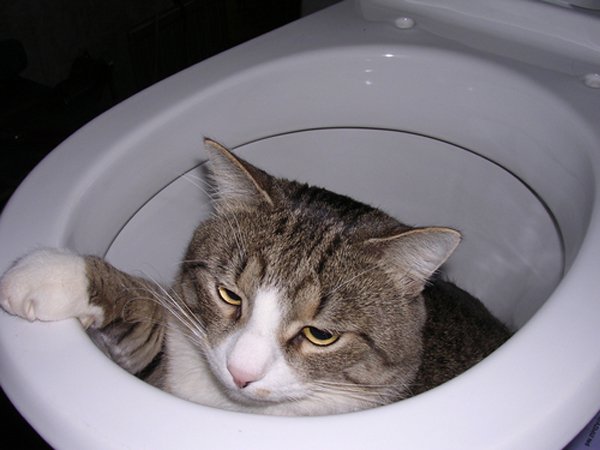Avoid Plumbing Problems: Don't Flush Cat Poop Down Your Toilet - Expert Guidance
Avoid Plumbing Problems: Don't Flush Cat Poop Down Your Toilet - Expert Guidance
Blog Article
Everybody may have their own unique assumption in relation to Don’t flush cat feces down the toilet.

Introduction
As pet cat owners, it's vital to be mindful of how we deal with our feline close friends' waste. While it may seem hassle-free to flush cat poop down the bathroom, this technique can have detrimental consequences for both the atmosphere and human health and wellness.
Ecological Impact
Purging pet cat poop presents harmful microorganisms and parasites right into the water supply, positioning a substantial risk to aquatic environments. These impurities can negatively affect aquatic life and compromise water quality.
Health Risks
In addition to ecological concerns, flushing pet cat waste can additionally present wellness dangers to people. Pet cat feces may contain Toxoplasma gondii, a parasite that can create toxoplasmosis-- a potentially extreme health problem, specifically for pregnant women and people with weakened immune systems.
Alternatives to Flushing
Thankfully, there are more secure and more liable methods to get rid of feline poop. Consider the following options:
1. Scoop and Dispose in Trash
The most typical technique of getting rid of feline poop is to scoop it into a naturally degradable bag and throw it in the trash. Be sure to use a specialized clutter inside story and throw away the waste quickly.
2. Use Biodegradable Litter
Opt for biodegradable cat clutter made from materials such as corn or wheat. These litters are environmentally friendly and can be securely dealt with in the trash.
3. Hide in the Yard
If you have a backyard, consider burying cat waste in a designated area away from veggie yards and water resources. Make certain to dig deep sufficient to stop contamination of groundwater.
4. Install a Pet Waste Disposal System
Purchase a pet dog waste disposal system particularly created for feline waste. These systems use enzymes to break down the waste, lowering odor and environmental impact.
Final thought
Liable animal possession expands beyond supplying food and sanctuary-- it additionally entails proper waste monitoring. By avoiding purging pet cat poop down the commode and opting for alternate disposal approaches, we can decrease our ecological impact and protect human wellness.
Why Can’t I Flush Cat Poop?
It Spreads a Parasite
Cats are frequently infected with a parasite called toxoplasma gondii. The parasite causes an infection called toxoplasmosis. It is usually harmless to cats. The parasite only uses cat poop as a host for its eggs. Otherwise, the cat’s immune system usually keeps the infection at low enough levels to maintain its own health. But it does not stop the develop of eggs. These eggs are tiny and surprisingly tough. They may survive for a year before they begin to grow. But that’s the problem.
Our wastewater system is not designed to deal with toxoplasmosis eggs. Instead, most eggs will flush from your toilet into sewers and wastewater management plants. After the sewage is treated for many other harmful things in it, it is typically released into local rivers, lakes, or oceans. Here, the toxoplasmosis eggs can find new hosts, including starfish, crabs, otters, and many other wildlife. For many, this is a significant risk to their health. Toxoplasmosis can also end up infecting water sources that are important for agriculture, which means our deer, pigs, and sheep can get infected too.
Is There Risk to Humans?
There can be a risk to human life from flushing cat poop down the toilet. If you do so, the parasites from your cat’s poop can end up in shellfish, game animals, or livestock. If this meat is then served raw or undercooked, the people who eat it can get sick.
In fact, according to the CDC, 40 million people in the United States are infected with toxoplasma gondii. They get it from exposure to infected seafood, or from some kind of cat poop contamination, like drinking from a stream that is contaminated or touching anything that has come into contact with cat poop. That includes just cleaning a cat litter box.
Most people who get infected with these parasites will not develop any symptoms. However, for pregnant women or for those with compromised immune systems, the parasite can cause severe health problems.
How to Handle Cat Poop
The best way to handle cat poop is actually to clean the box more often. The eggs that the parasite sheds will not become active until one to five days after the cat poops. That means that if you clean daily, you’re much less likely to come into direct contact with infectious eggs.
That said, always dispose of cat poop in the garbage and not down the toilet. Wash your hands before and after you clean the litter box, and bring the bag of poop right outside to your garbage bins.
https://trenchlesssolutionsusa.com/why-cant-i-flush-cat-poop/

Do you enjoy more info about How to Dispose of Cat Poop and Litter Without Plastic Bags? Place feedback down the page. We will be glad to see your feelings about this blog posting. In hopes that you visit us again in the future. Make sure you take a moment to promote this content if you appreciated it. We appreciate reading our article about How to Dispose of Cat Poop and Litter Without Plastic Bags.
Visit Our Site Report this page